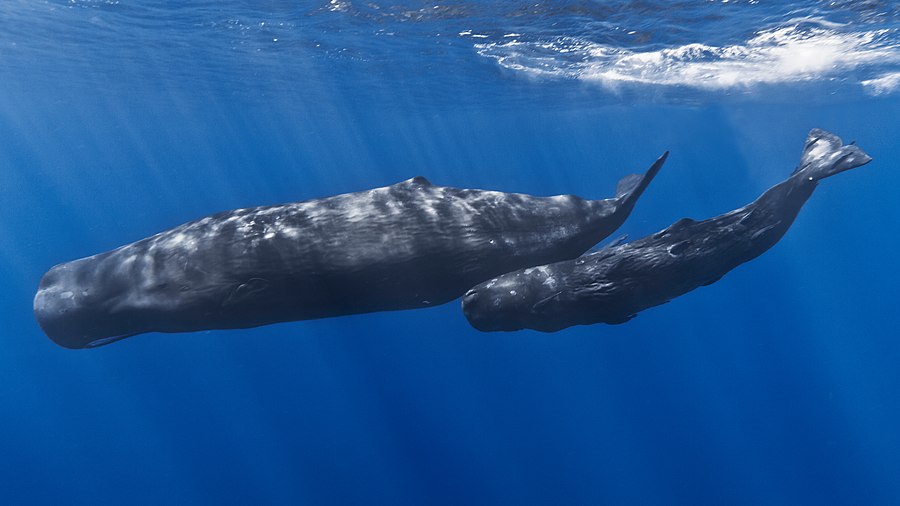Facts About Sperm whale
The sperm whale, also known as the cachalot, holds the title of the largest toothed whale and predator. Belonging to the genus *Physeter*, it shares its family with the pygmy and dwarf sperm whales. These majestic creatures are distributed throughout the world, migrating with the seasons in search of food and mates. While females and young males form cohesive social groups, adult males tend to lead more solitary lives. Female sperm whales are notably cooperative, working together to protect and nurse their young. They give birth every four to twenty years and care for their calves for over a decade. Their primary natural threat comes from orcas, which can endanger calves and weaker adults.
Mature male sperm whales can grow up to 20.7 meters (68 feet) long, with their heads comprising a significant portion of their total length. They are remarkable divers, reaching depths of up to 2,250 meters (7,382 feet). Known for their extraordinarily loud underwater vocalizations, reaching up to 230 decibels, they also possess the largest brain of any animal on Earth, which weighs more than five times that of a human. These giants can live for 70 years or more.
Historically, sperm whales were heavily hunted for their spermaceti (sperm oil) and ambergris. Spermaceti was valued for use in oil lamps, lubricants, and candles, while ambergris was a prized ingredient in perfumes. Intense hunting led to a significant decline in their population, reducing it by as much as 29% by 1880. Fortunately, conservation efforts have since been implemented. In 1985, the International Whaling Commission granted them full protection. Today, sperm whales are listed as vulnerable by the International Union for Conservation of Nature (IUCN) and are protected under various international agreements.
Sperm whales play a crucial role in ocean ecosystems. Their iron-rich feces help boost primary production and facilitate carbon export. Despite ongoing threats such as entanglement in fishing nets, ship strikes, marine debris, ocean noise, and chemical pollution, the species shows signs of recovery. Culturally, sperm whales are significant in many regions, with their teeth and ivory being historically and traditionally important.
Researchers and whale watchers remain captivated by sperm whales. Popular locations for whale watching include Kaikoura in New Zealand, Andenes and Tromsø in Norway, the Azores, and Dominica. To protect these magnificent creatures, efforts to reduce plastic waste in our oceans are crucial.

 North Macedonia
North Macedonia